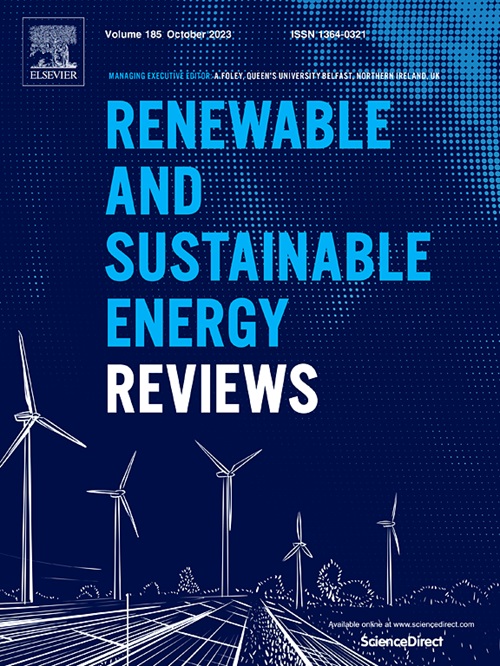Selection of passive energy consumption optimisation strategies for buildings
IF 16.3
1区 工程技术
Q1 ENERGY & FUELS
引用次数: 0
Abstract
Passive energy consumption optimisation strategies are apt solutions to tackle the negative impacts of buildings on people and environment. However, the existence of numerous criteria has made the selection of suitable passive strategies very challenging and complicated, which is perhaps the reason for the scarcity of comprehensive studies that simultaneously consider all classes of selection criteria, especially technical, economic, and social ones. This study initially identifies the existing passive strategies and the criteria involved in their identification, weighting, ranking, and selection, with particular emphasis on buildings located in the United Kingdom. Questionnaire survey was utilised for data collection due to the reliance of specific selection criteria, such as “job creation”, on expert judgment. The gathered data were then analysed by the hybridisation of criteria importance through inter criteria correlation (CRITIC) and evaluation based on distance from average solution (EDAS) fuzzy approaches. Based on the obtained results, “reduction of greenhouse gas emissions”, “being environmentally friendly”, “flammability”, and “reduction of energy consumption” were ranked as the most important selection criteria. Consequently, the best and most sustainable passive strategies were concluded to be “improving fenestration design of building, “air tightness improvement of building”, and “optimum design of building's insulation layer”, with final scores of 0.882, 0.876, and 0.828, respectively. The results obtained from this study can have a significant role in sustainable selection of passive energy consumption optimisation strategies for United Kingdom buildings, consequently enhancing the realisation of critical Sustainable Development Goals, especially “Sustainable Cities and Communities”.

求助全文
约1分钟内获得全文
求助全文
来源期刊

Renewable and Sustainable Energy Reviews
工程技术-能源与燃料
CiteScore
31.20
自引率
5.70%
发文量
1055
审稿时长
62 days
期刊介绍:
The mission of Renewable and Sustainable Energy Reviews is to disseminate the most compelling and pertinent critical insights in renewable and sustainable energy, fostering collaboration among the research community, private sector, and policy and decision makers. The journal aims to exchange challenges, solutions, innovative concepts, and technologies, contributing to sustainable development, the transition to a low-carbon future, and the attainment of emissions targets outlined by the United Nations Framework Convention on Climate Change.
Renewable and Sustainable Energy Reviews publishes a diverse range of content, including review papers, original research, case studies, and analyses of new technologies, all featuring a substantial review component such as critique, comparison, or analysis. Introducing a distinctive paper type, Expert Insights, the journal presents commissioned mini-reviews authored by field leaders, addressing topics of significant interest. Case studies undergo consideration only if they showcase the work's applicability to other regions or contribute valuable insights to the broader field of renewable and sustainable energy. Notably, a bibliographic or literature review lacking critical analysis is deemed unsuitable for publication.
 求助内容:
求助内容: 应助结果提醒方式:
应助结果提醒方式:


